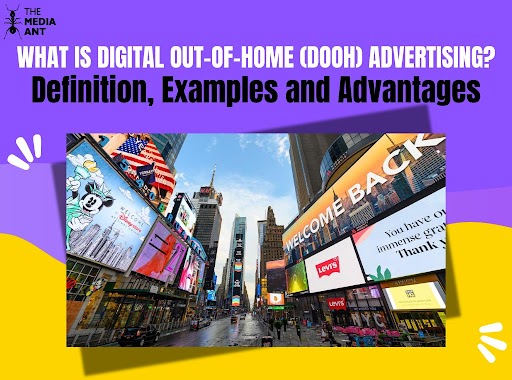As the world becomes increasingly connected and technology advances, the advertising industry has evolved to keep up with these changes. One area that has seen significant growth and innovation in recent years is digital out-of-home advertising (DOOH). DOOH refers to advertising displayed on digital screens in public spaces, such as billboards, bus shelters, and digital signage in malls or airports. Businesses may reach a larger audience and interact with customers as they go about their everyday lives by using this type of advertising.
In this blog, we will explore the DOOH advertising world, its benefits and how businesses can use it to achieve their marketing and advertising goals. So whether you’re an advertising professional, a business owner, or simply curious about the world of DOOH, you’ll find valuable insights and information here.
What is Digital Out-Of-Home Advertising?
Digital out-of-home advertising, often known as DOOH advertising, is a type of marketing that involves showing digital content on screens in public areas or other real-world settings. These digital screens can be seen in various locations, including billboards, retail centers, airports, train stations, bus stops, and other high-traffic places.
Digital technology is used in DOOH advertising to transmit dynamic and exciting material, such as pictures, videos, animations, interactive features, and other multimedia forms, to grab viewers’ attention and spread marketing messages. The content shown on DOOH screens can be remotely updated in real time, enabling the target audience to receive timely and pertinent advertising messages.
Compared to conventional out-of-home advertising strategies, DOOH advertising has several benefits. It enables targeted advertising based on location, time of day, and audience demographics. It allows for real-time campaign optimization and offers freedom and creativity in providing compelling content. Moreover, data-driven insights and performance analytics from DOOH advertising can help marketers assess the success of their campaigns and make informed decisions.
With improvements in digital technology, rising urbanization, and shifting consumer behavior, DOOH advertising is becoming increasingly popular. Advertisers and marketers utilize it to spread information, market goods and services, build brand awareness, and affect consumer behavior in the real world. DOOH advertising is seen as a novel and efficient method of interacting with audiences in public settings.
Difference Between Out-Of-Home and Digital Out-Of-Home
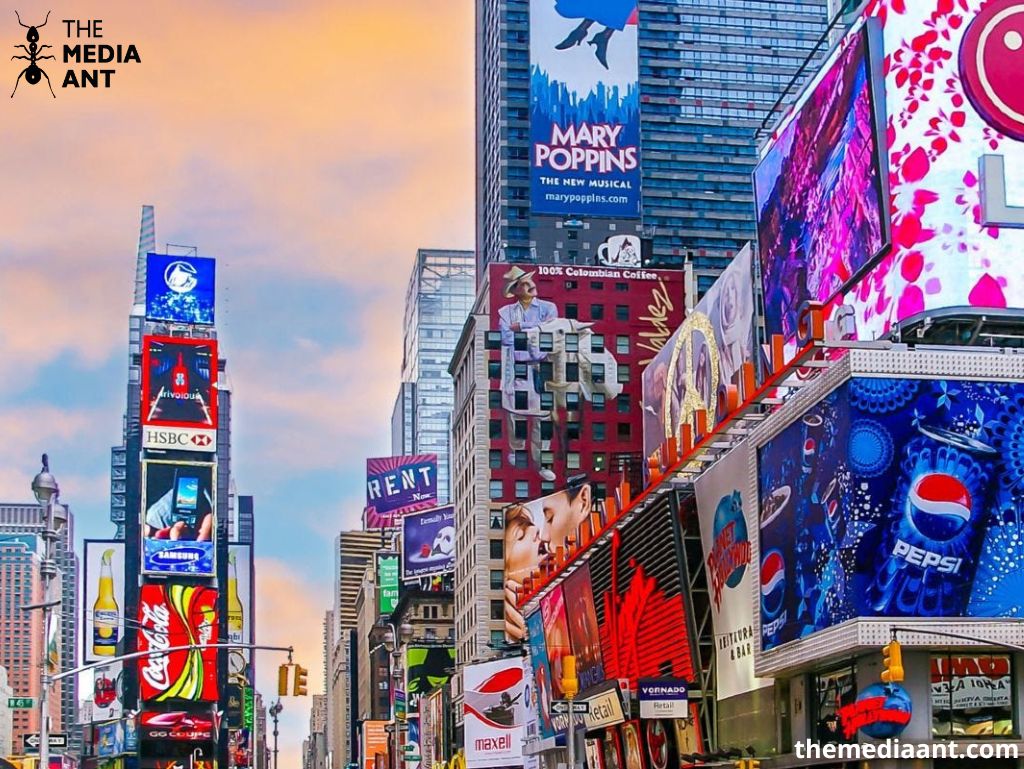
Both forms of advertising OOH (Out-of-Home) and DOOH (Digital Out-of-Home) are visible in public areas or other physical locations. Still, they differ regarding the media employed and the degree of flexibility and interactivity.
1. Medium
Whereas DOOH advertising uses digital screens that show dynamic and interactive material, such as photographs, videos, animations, and interactive components, OOH advertising often uses static, non-digital formats, including billboards, posters, banners, and signs.
2. The flexibility of Content
OOH advertising typically has limited flexibility when it comes to updating or changing content after it has been exhibited because it frequently calls for physical alterations to printed media. Contrarily, dynamic campaign management and real-time content updates are possible with DOOH advertising since the digital material may be remotely modified, planned, or optimized depending on location, time, and audience demographics.
3. Interaction
Using touchscreens, gestures, or other interactive features, consumers can interact with digital screens in DOOH advertising, which can result in interactive material that is immersive and engaging. On the other hand, OOH advertising is often static and does not provide interaction.
4. Targeting and measurement
Digital screens can be fitted with data-driven technology to target specific audiences depending on location, time of day, Weather, and audience demographics. As a result, DOOH advertising offers enhanced targeting possibilities. Moreover, data-driven insights and performance metrics from DOOH advertising can help with campaign measurement and optimization. Conversely, OOH advertising typically needs more targeting and measuring options.
5. Creative Options
DOOH advertising offers creative freedom, which features dynamic and compelling content like movies, animations, and interactive elements. Because OOH advertising is static, it may have fewer creative options and use images and messaging.
OOH, and DOOH advertising have advantages and are frequently combined to produce integrated marketing programmes. While DOOH advertising has the benefits of dynamic and interactive information, real-time updates, sophisticated targeting, and measurement tools, OOH advertising can give a broad audience and high visibility. The unique objectives, target audience, creative requirements, and financial constraints of a given advertising campaign all influence the decision between OOH and DOOH advertising.
Why is Digital Out-Of-Home is an Effective Advertising Medium?
Let’s take a look at the list of benefits of DOOH (Digital Out-of-Home) advertising:
1. Increased Engagement
Digital material that is dynamic and interactive is used in DOOH advertising to attract attention and produce engaging experiences.
2. Real-time Content Updates
Real-time content updates in DOOH advertising provide timely and pertinent advertising messages.
3. Advanced Targeting
DOOH advertising provides advanced targeting options based on variables like location, time, and audience demographics, resulting in more targeted and pertinent advertising.
4. Data-driven insights and performance
For improved campaign measurement and optimization, DOOH advertising offers data-driven insights and performance indicators.
5. Broad Reach and Visibility
Because DOOH advertising is exhibited in busy areas, it has a broad audience reach and is very visible.
6. Innovation and Creativity
DOOH advertising enables distinctive and memorable advertising experiences by allowing creative flexibility with dynamic and interactive content.
Overall, the compelling content, real-time updates, sophisticated targeting, data-driven insights, broad reach, and creative options of DOOH advertising make it effective.
Digital Out-Of-Home (DOOH) Advertising Examples
Digital Out-of-Home (DOOH) advertising is available in various sizes, including large formats intended to draw attention in busy places. These are a few instances:
1. Large Sized Formats
Large-sized formats are an effective way of grabbing attention in outdoor advertising. The following are some instances of Large Sized DOOH advertising formats:
1. Digital Billboards
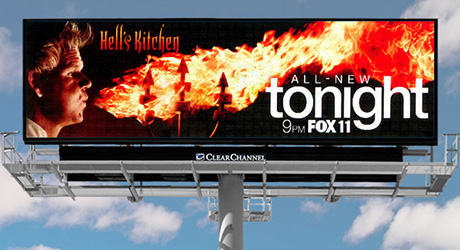
Large LED or LCD screens, or “digital billboards,” display eye-catching and dynamic advertisements. These can have high-quality images, animations, and videos to efficiently communicate brand messages and can be placed beside roads, in cities, or in other busy locations.
2. Digital video walls
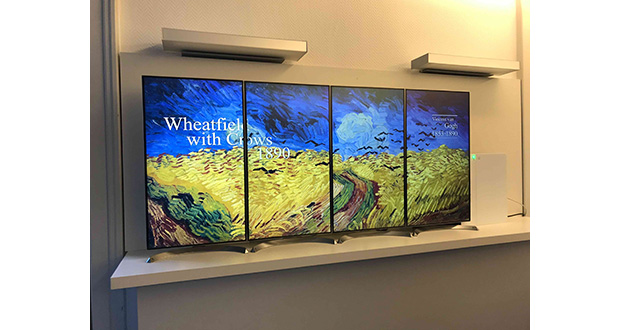
Digital video walls are enormous displays with several screens organized in a grid or mosaic design. They frequently provide powerful advertising displays, including synchronized material, immersive movies, and interactive components in malls, airports, and other public places.
3. Digital posters
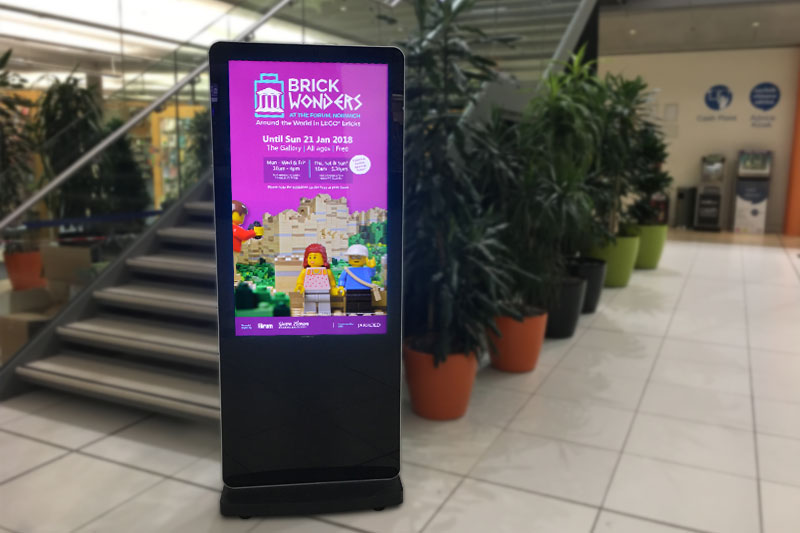
Large format screens known as “digital posters” are frequently put on walls or freestanding objects in busy areas. They can be remotely updated to give timely and appropriate adverts and display static or dynamic information.
4. Spectaculars
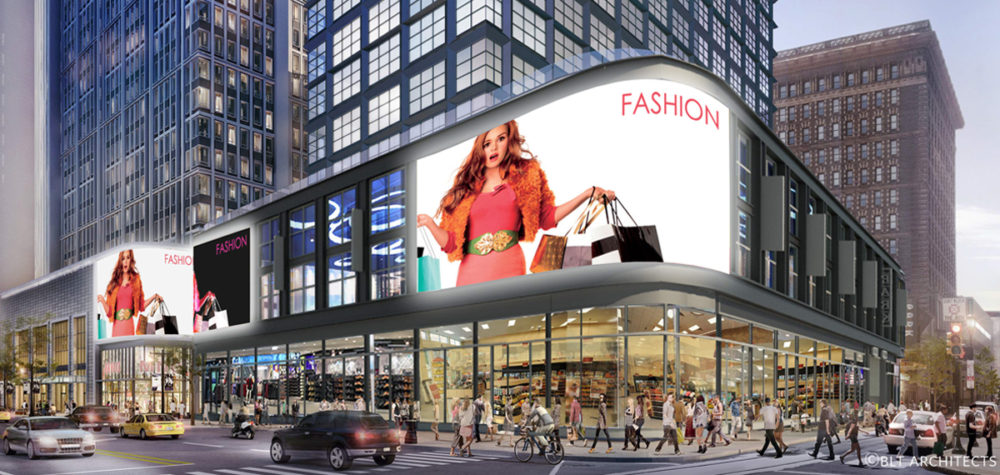
Spectaculars are sizable, attention-grabbing DOOH displays intended to be aesthetically impressive. To create memorable and immersive advertising experiences, they frequently use original designs, constructions, and lighting effects. Some examples are Times Square billboards in New York City or other famous locations in big cities.
5. Transportation Displays
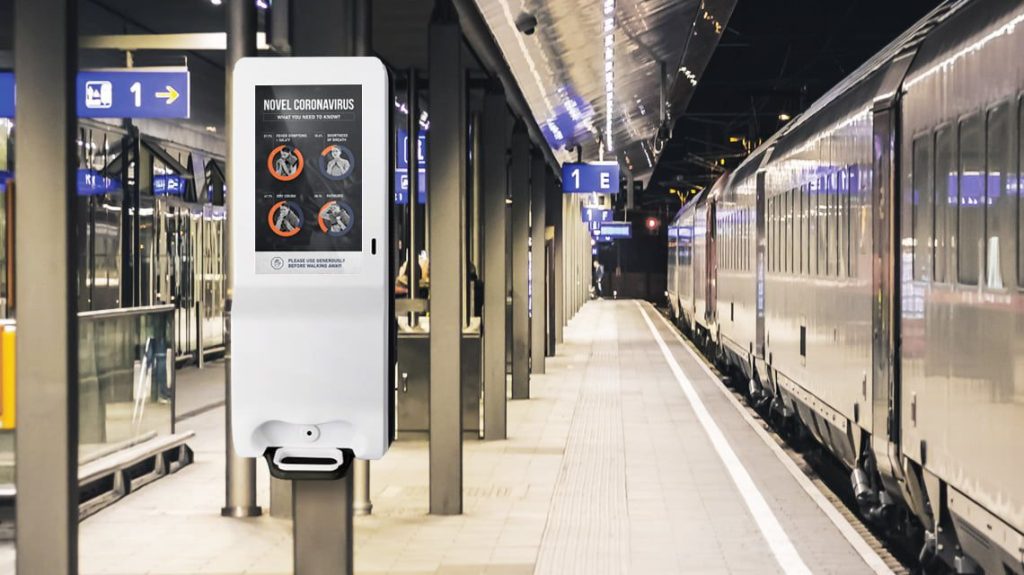
Other places where people use public transportation, like bus stops, train stations, and airports, also include DOOH screens. By displaying pertinent promotions, deals, or brand messaging, these screens can give targeted advertising to commuters and travelers.
2. Place-Based Advertising
Place-based advertising via DOOH (Digital Out-of-Home) can promote consumer engagement in particular physical areas. The following are some instances of location-based DOOH advertising:
1. Retail Stores
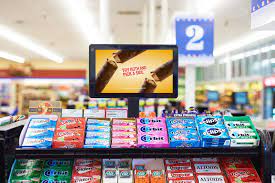
Product promotions, future sales, or new arrivals can all be displayed with DOOH displays inside retail establishments. For instance, a digital screen next to the cash register at a clothes store could show advertisements for the newest trends in fashion or provide tailored discounts to encourage sales.
2. Airports
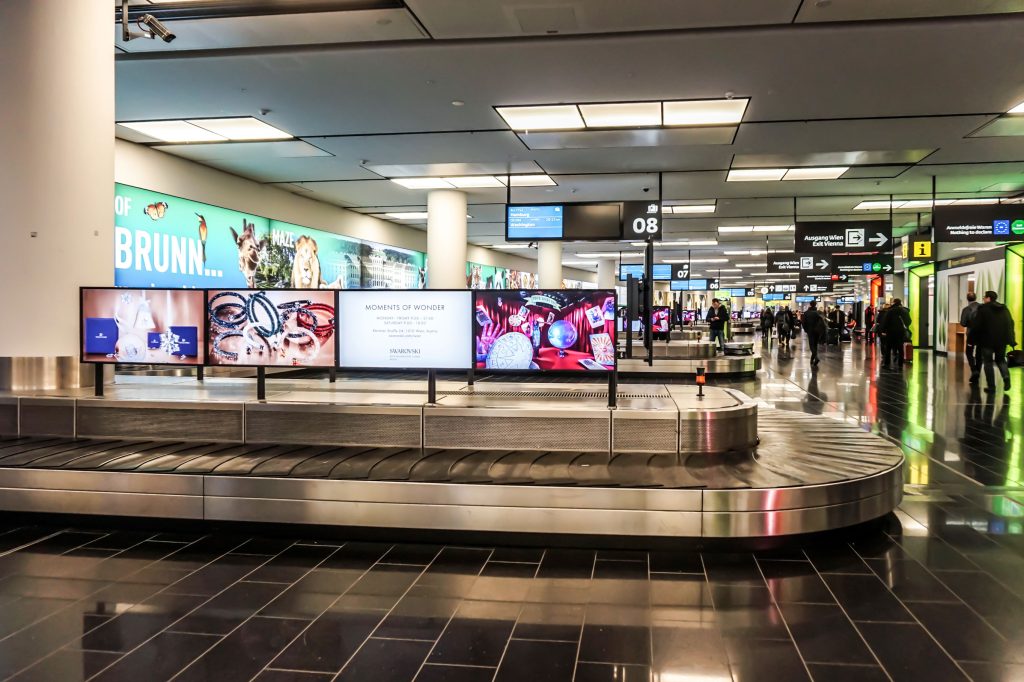
Advertising for travel-related goods, services, or locations can be shown on airport DOOH screens. For instance, an airport terminal’s digital billboard might showcase a commercial for a hotel chain, a vehicle rental company, or a travel agency marketing holiday packages.
3. Transit Stations
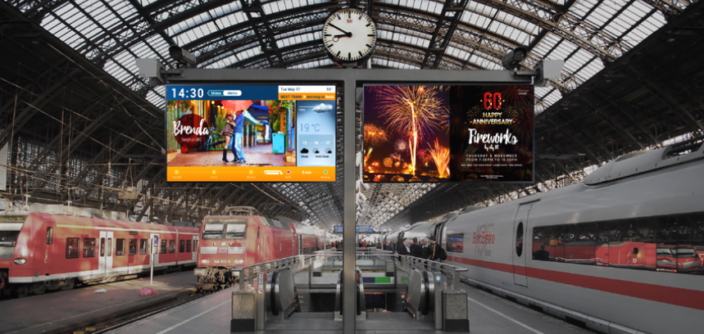
DOOH advertisements for regional companies, services, or events may be displayed in transit stations, such as bus stops or train stations. For instance, a digital screen at a bus stop could show advertisements for neighboring eateries, entertainment places, or upcoming concerts to draw commuters’ and travelers’ attention.
4. Sporting Arenas/Stadiums
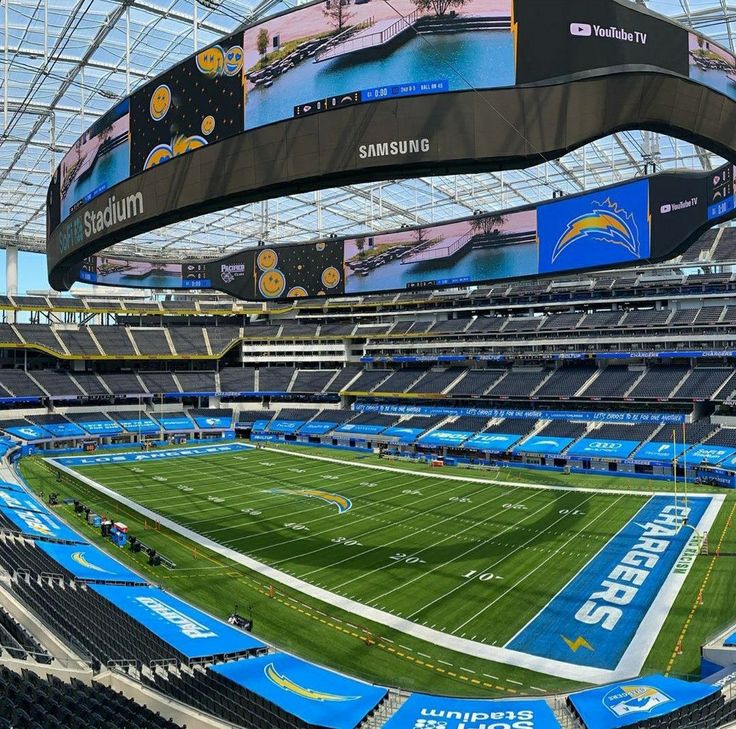
DOOH screens in sporting arenas or stadiums can display advertisements from sponsors and advertise forthcoming events or current special promotions. For instance, during halftime or breaks, a digital video wall in a sports arena can show advertisements for sportswear, sports beverages, or sports betting services.
5. Shopping Centers

DOOH displays in shopping centers may feature advertisements for the mall’s shops, eateries, or entertainment venues. For instance, digital signage next to an escalator might show advertisements for a restaurant, a movie theater, or a cosmetics brand to entice customers to eat there or visit neighboring businesses.
3. Point of Purchase
Advertising initiatives aiming at influencing consumer purchases at the point of sale, usually in retail settings, are referred to as point of purchase (POP) advertising. The efficient usage of DOOH (Digital Out-of-Home) for POP advertising offers the chance to engage consumers at the crucial time when they are making purchasing decisions. POP DOOH advertising examples include the following:
1. Digital Shelf Edge Displays
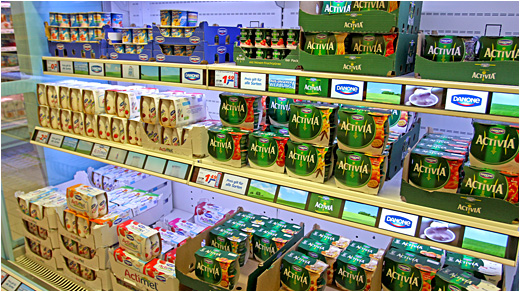
These shelves-mounted screens can show product advertisements, special offers, or product details. For instance, a grocery store’s digital shelf edge display could show advertisements for a particular cereal brand or advertise a special deal on a brand-new item.
2. Point of Sale Displays
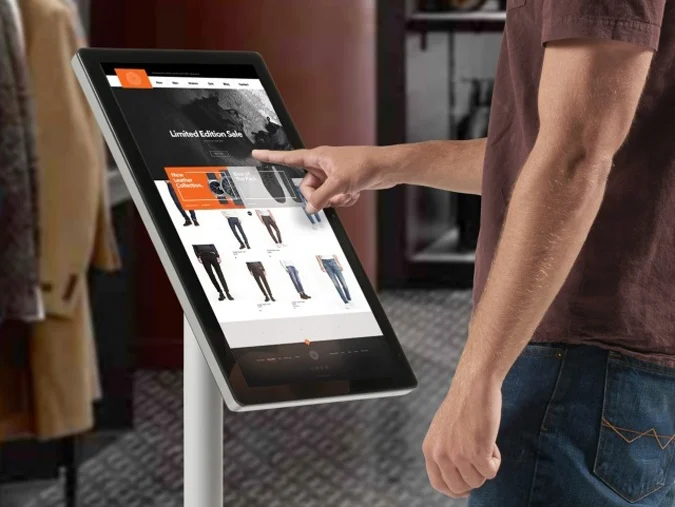
They can present last-minute promotions or upsell possibilities and are often close to the cash register or checkout counter. For instance, to raise the average transaction value, adverts for accessories or add-on items may be shown on a digital screen next to the checkout counter in a clothes store.
3. Digital menu boards
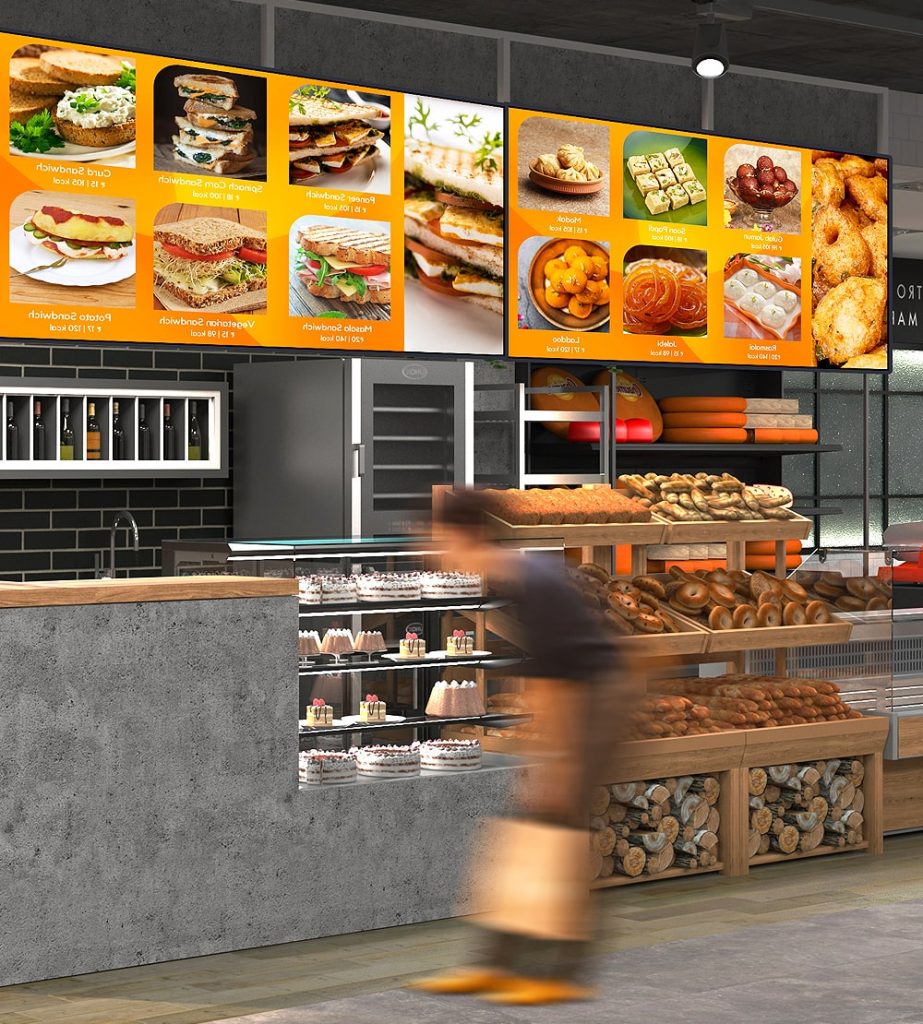
Quick-service restaurants frequently employ digital menu boards to display menu items, specials, and combo meals. For instance, adverts for meal packages or limited-time bargains may be displayed on a fast food restaurant’s digital menu board to encourage quick purchases.
4. End caps and feature displays
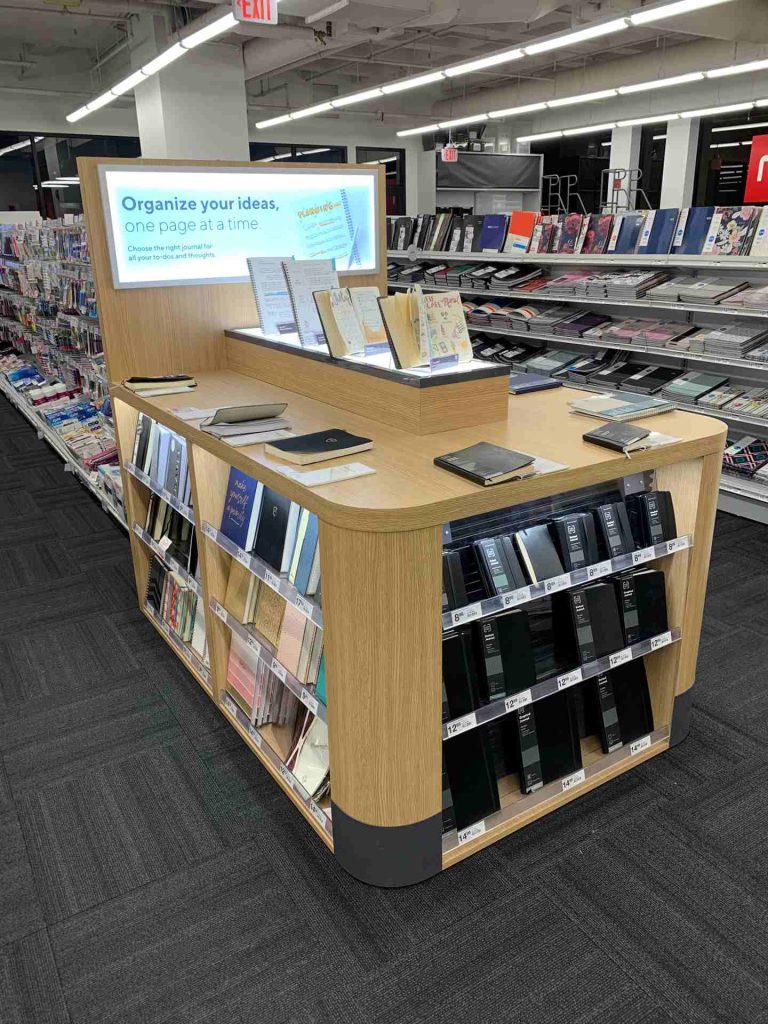
DOOH displays positioned at the end of store aisles, or feature displays can display advertisements for specific goods or specials. For instance, to draw customers in, a digital display at the end of a gallery of groceries might feature advertisements for a new product or draw attention to a special seasonal offer.
In attempts to influence customer purchasing decisions, DOOH offers the flexibility to update the material in real-time, target specific places, and deliver dynamic and compelling adverts.
Advantages of Digital Out-Of-Home Advertising
Digital Out-of-Home (DOOH) advertising refers to advertising that is displayed on digital screens, such as billboards, kiosks, and signage. Due to its broad audience reach and the possibility for sophisticated targeting and customization, DOOH advertising has grown in popularity recently. Here are some of the advantages of DOOH advertising:
1. Programmatic Advertising
DOOH benefits from programmatic advertising, which enables automated digital advertising purchasing, selling, and optimization. Advertisers may easily target their advertising with programmatic DOOH, continuously improve their campaigns based on performance data, and find better and more successful ad placements.
2. Audience Targeting
Using several factors, including geography, demographics, behavior, and context, DOOH enables exact audience targeting. As a result, there is a higher level of engagement and improved campaign performance when advertisers can provide highly relevant and tailored ads to particular audiences.
3. Weather-Based Advertising
DOOH may use weather data to deliver advertising that Is Based on the Weather, which enables advertisers to dynamically modify their advertisements based on actual weather conditions. For instance, a beverage company may advertise cool drinks in the summer to increase consumer engagement and contextual relevance.
The Future of DOOH
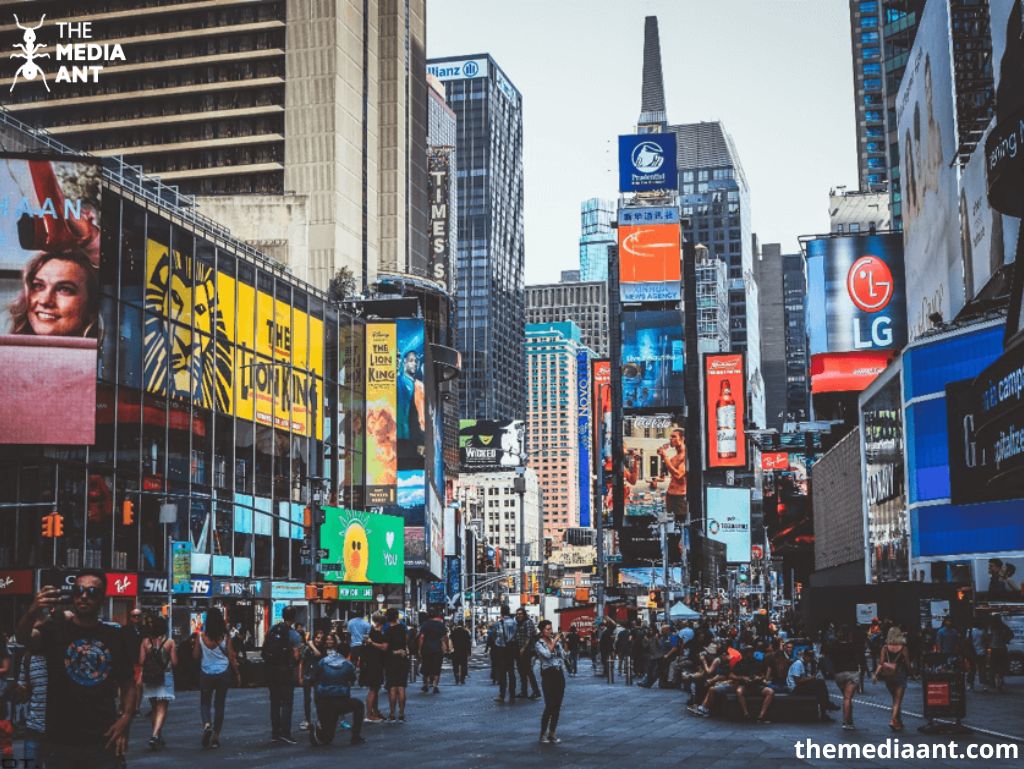
Technology advancements, data-driven advertising, dynamic and interactive content, integration with IoT and smart devices, improved measurement and attribution, sustainability initiatives, and integration with online and mobile advertising are predicted to shape the future of DOOH (Digital Out-of-Home) advertising. In line with sustainability and environmental concerns, these trends will likely lead to more focused, unique, and interesting DOOH campaigns offering pertinent advertisements to particular audiences in real time. For a consistent and integrated brand experience, advertisers will use these trends to optimize their campaigns, track their effectiveness, and build synergies across various digital marketing platforms.
Digital Out-Of-Home Advertising Agency
The Media Ant is a top DOOH advertising agency in India with over 10 years of experience in media buying and planning. The agency helps brands effectively reach their target audiences through its DOOH advertising expertise. With a comprehensive understanding of the Indian market, The Media Ant is a trusted partner for brands seeking to maximize their advertising impact.
Are you looking for DOOH advertising?
Fill out the below form with your advertising requirements.
FAQs Related to Digital Out-Of-Home Advertising
1. What is the meaning of DOOH in advertising?
Digital out-of-home advertising, often known as DOOH advertising, is a type of marketing that involves showing digital material on displays in public areas or other real-world settings. These digital screens may be seen in various locations, including billboards, retail centers, airports, railway stations, bus stops, and other high-traffic places.
2. What is an example of DOOH advertising?
A large-sized DOOH advertising format could be a digital billboard displaying a vibrant advertisement for a new car model on a busy highway, a digital video wall showcasing a fashion brand’s latest collection in a shopping mall, a digital poster promoting a blockbuster movie in a cinema lobby, a spectacular display featuring a soda brand’s logo and fizzing effects, or a transit display at a bus shelter displaying a local restaurant’s daily specials for commuters.
3. What is the full form of DOOH?
The full form of DOOH is “Digital Out-of-Home.”z
4. Why is DOOH so popular?
Digital Out-of-Home, or DOOH, has grown in popularity because it can reach a large audience with exciting and dynamic information in busy areas. Customization and relevance are made possible by changing the content in real-time based on variables like time, Weather, and location. Moreover, DOOH screens can gather helpful information for enhancing ad targeting and campaign effectiveness. The capabilities of DOOH are further improved by incorporating cutting-edge technologies like mobile connectivity, augmented reality, and LED, LCD, and OLED displays. In general, DOOH provides effective advertising options that draw attention and build enduring brand experiences in the outdoor setting.
5. What is the Most Popular Mode of DOOH Advertising?
The most popular mode of DOOH advertising is digital screens. Digital screens allow advertisers to display dynamic and engaging content, including videos, animations, and real-time data. They also offer greater flexibility and can be updated remotely, making them ideal for campaigns requiring frequent changes or updates. Digital screens can also be strategically placed in high-traffic areas to reach a wider audience.
6. What is a DOOH Screen?
A DOOH screen is a digital display for advertising or informational purposes in public areas. Shopping centers, airports, train stations, bus stops, billboards, and other busy places are familiar places to find DOOH screens.
Digital billboards, video walls, interactive kiosks, and standalone digital displays are large-format displays commonly used for DOOH. They can be used to show engaging and dynamic material like commercials, news updates, announcements, and other multimedia content.

